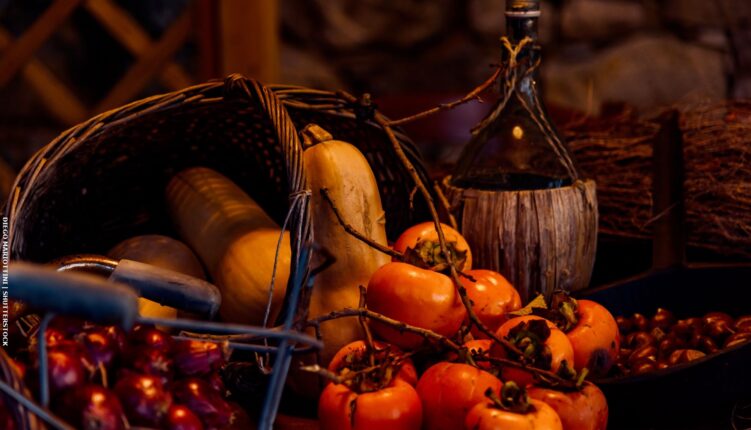Autumn brings shorter, cooler days and with the ever-present subject of climate change on our minds together with the knowledge that we benefit greatly health wise, we thought it an excellent idea to look at some Portuguese autumn fruit.
Maças Beira Alta
The north of Portugal offers a variety of fruit, one being apples. OK, so different varieties of apple are available all year but one of the most delicious for pies or baked is the Beira Alta apple (maça Beira Alta), harvested in autumn.
Grown in the district of Viseu (known as the Beira interior) where the climatic conditions are harsh with cold winters and dry, hot summers, this apple is a deep red in colour with a distinctive sweet flavour and plenty of juice.
Marmelos
A fruit, this time also grown in the Algarve, that is only harvested in autumn is quince (marmelo).
Not a fruit to eat raw as it is quite bitter in taste, the Portuguese usually make marmalada from it.
Marmalada is not marmalade as we know it, but a solid jelly-like jam that is usually sold in rectangular blocks and can be cut into slices.
Usually eaten with cheese but also very tasty spread on toast with butter.
Romãs
Pomegranates (romãs) are also grown in the Algarve, the trees are beautiful in the spring with their deep green leaves and bright orange flowers.
The fruit ripens through late summer and is ripe and ready to pick in early autumn.
Known to have high in antioxidants and vitamin E, the pomegranate is tasty eaten straight from the peel (although it is quite challenging to get to the edible seeds) or even in juices.
Dióspiros
Originally from Asia persimmon is a strange fruit, definitely a Marmite equivalent in the fruit world – loved or hated.
There are two varieties of persimmon (dióspiro) in Portugal; one is eaten like an apple with a similar texture and the other is softer and can open up easily and the best way of eating it is by using a spoon eating the flesh from the opened fruit.
Both need to be eaten when ripe.
Castanhas
And our final autumn fruit is actually a nut. The chestnut. And in our opinion, the best way to eat them is roasted from a street vendor, wrapped in newspaper.
Rich in vitamins you can buy chestnuts (castanhas) from supermarkets and then roast them yourself on an open fire or in the oven with salt.
Also great as a soup or accompanying roasted meat, chestnuts are often eaten with a glass of Jeropiga, a fortified sweet wine.
Read more about local fruit such as oranges, olives and almonds.


One thought on “Top Portuguese autumn fruit”